Optimize Product Development with Teamcenter
Make your manufacturing and Engineering-to-Order projects smoother with Siemens Teamcenter. Teamcenter helps you work better together, cut costs, and scale as your needs change.
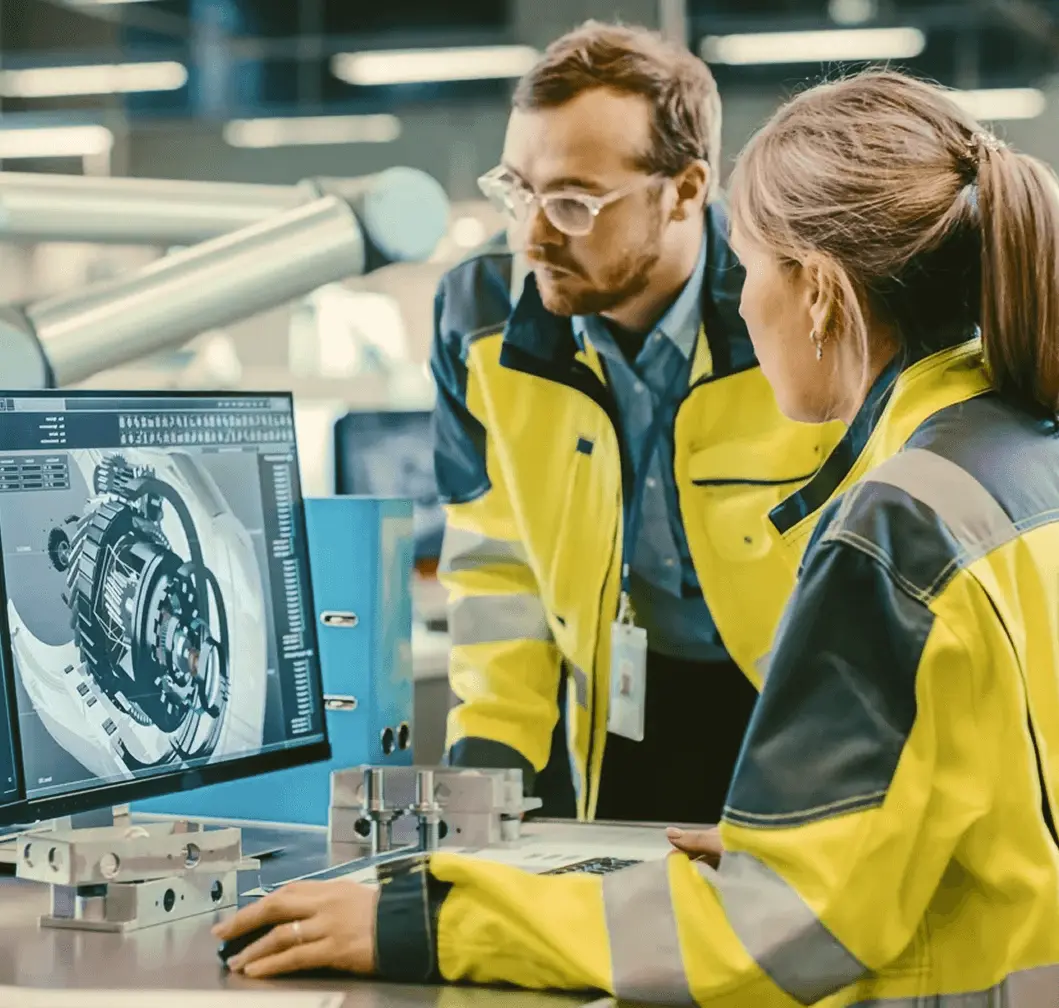
The CLEVR way: From vision to value
At CLEVR, we don’t just implement technology—we enable transformation. Our approach ensures that companies don’t just digitize but truly evolve by embedding Low Code, PLM, and MOM solutions in a structured, scalable way.
Key NX Features
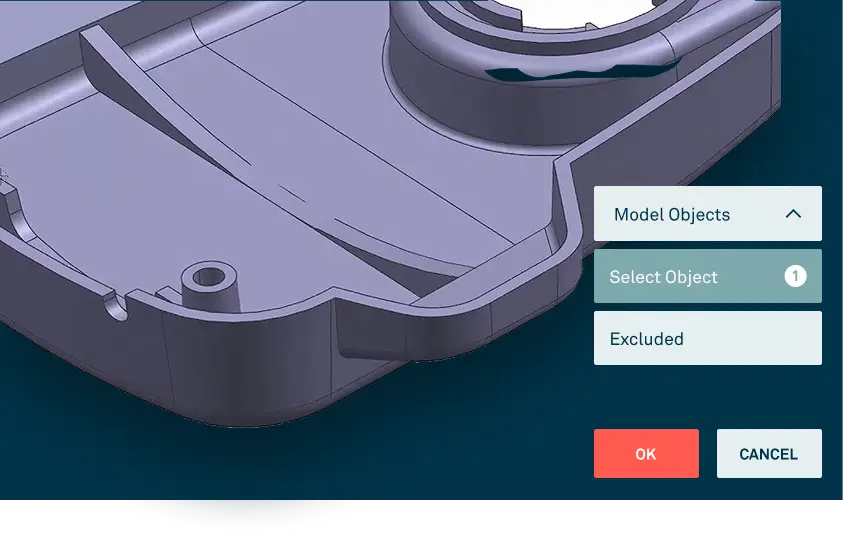
Integrated Design, Simulation, and Manufacturing
Combine all aspects of product development into a single environment, reducing design iterations and accelerating time-to-market.
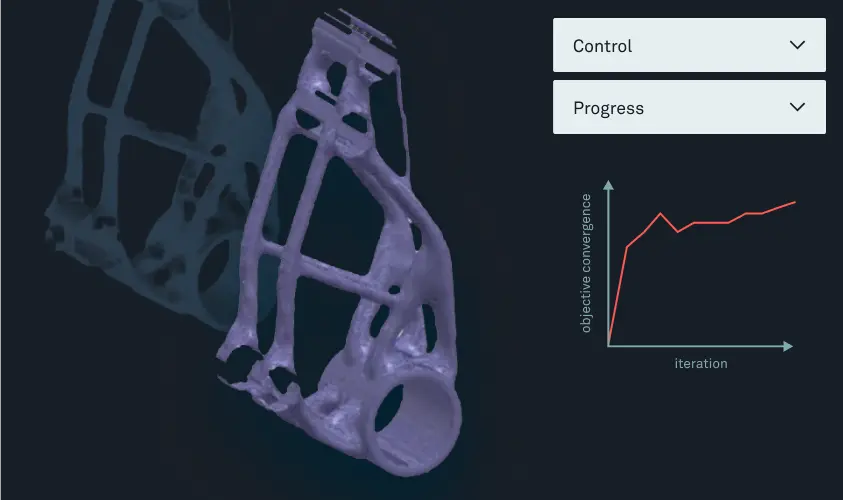
Integrated Design, Simulation, and Manufacturing
Combine all aspects of product development into a single environment, reducing design iterations and accelerating time-to-market.
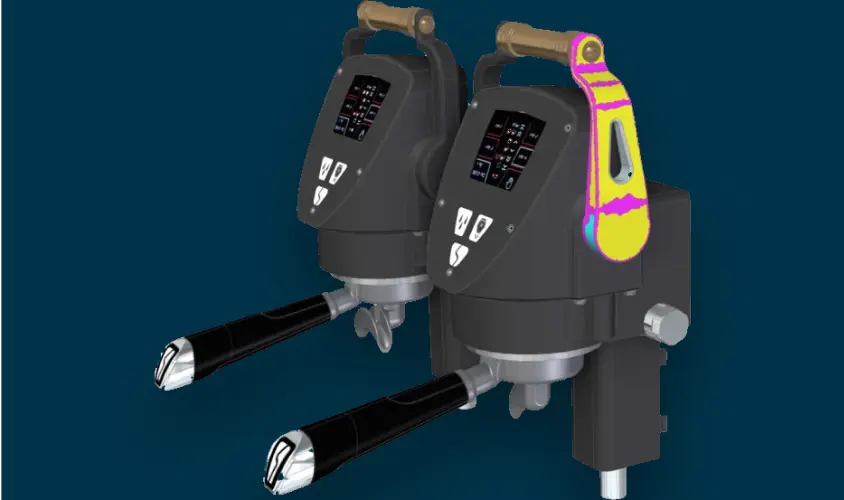
Integrated Design, Simulation, and Manufacturing
Combine all aspects of product development into a single environment, reducing design iterations and accelerating time-to-market.
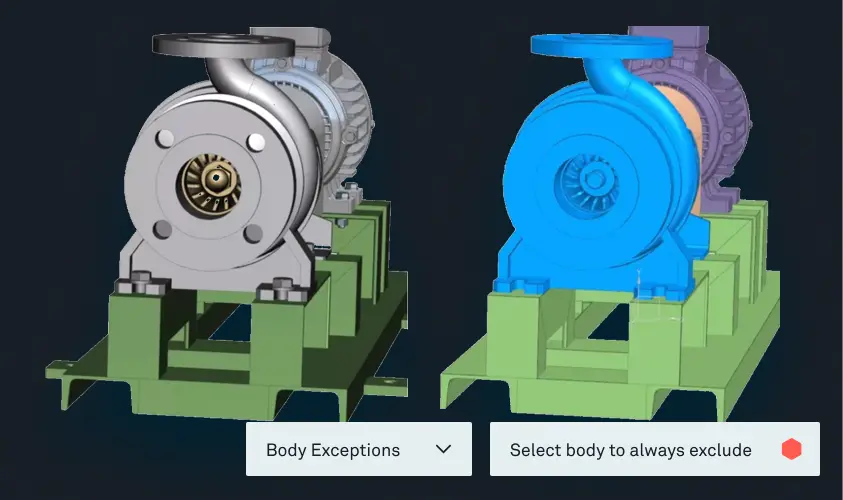
Integrated Design, Simulation, and Manufacturing
Combine all aspects of product development into a single environment, reducing design iterations and accelerating time-to-market.
Why CLEVR?

- Proven Expertise: 20 years of low code experience, 3,500+ applications delivered.
- Tailored Solutions: A unique "Vision to Value" methodology ensuring measurable results.
- Global Recognition: Mendix Platinum Partner, awarded Best BNL Partner 2024.
- Customer Satisfaction: Score of 8.8 out of 10, reflecting our commitment to excellence.
- Certified Professionals: The largest team of Mendix expert developers and MVPs.
- Proven Expertise: 20 years of low code experience, 3,500+ applications delivered.
Compare licensing plans
Advanced
Create and edit designs of typical 3D parts and assemblies and more with NX X Design Standard.
Standard
Create and edit designs of typical 3D parts and assemblies and more with NX X Design Standard.
Premium
Create and edit designs of typical 3D parts and assemblies and more with NX X Design Standard.
Stories from our customers
See how businesses like yours are transforming with CLEVR.
CLEVR’s industry knowledge and experience in automating complex wholesale processes helped us to create a future-proof product lifecycle management (PLM) environment. We are very pleased with the collaboration. It clicked from the first moment. We keep each other sharp and make good use of complementary expertise.
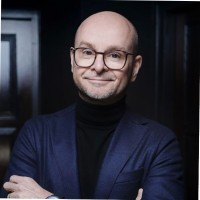


CLEVR suggested some new ways we could use Teamcenter that we hadn't seen before



Mendix allows us to rapidly adapt to new legal demands and security updates.

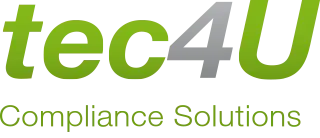

I think we build tomorrow together in different ways. We try to build the future by providing equipment to produce green hydrogen to enable the green transition, and CLEVR with the information technology will help us to do that efficiently

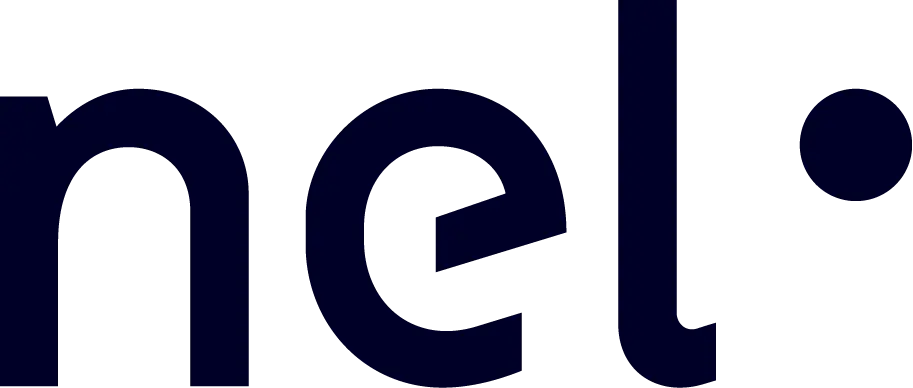
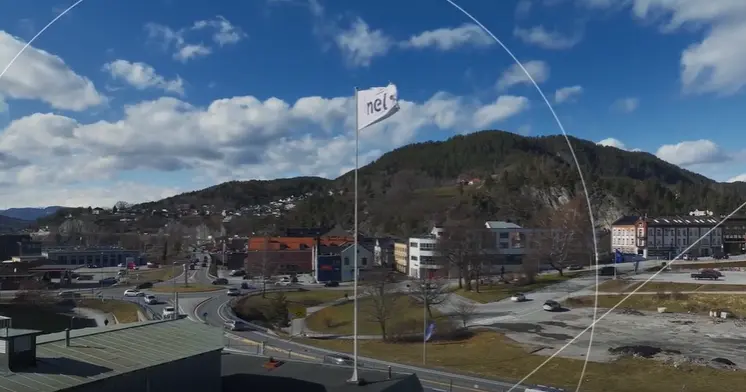

Find out how CLEVR can drive impact for your business
We try to build the future by providing equipment to produce green hydrogen to enable the green transition.
Related Resources

Why Excel is Failing Modern Manufacturing And How MES Fixes It
Digital transformation is no longer a buzzword. It’s happening in real factories today. Siemens has built its Electronics Works Amberg into a flagship digital twin showcase, Bosch is using its Nexeed Smart Factory platform to cut energy use by up to 40% in plants like Homburg, and Tesla’s Gigafactories are redefining automated, software-driven production at scale.
These examples prove that smart factories are not just visions. They are operating realities delivering measurable results, making it all the more striking that around 80% of manufacturers continue to rely on Excel for production planning.
For years, studies have deemed spreadsheet-based planning inadequate for modern manufacturing, highlighting it as one of the biggest barriers to digital maturity. So, while they may feel familiar, inexpensive, and somewhat flexible, we have to ask ourselves whether they are truly scalable.
Can spreadsheets connect to ERP, PLM, IIoT sensors, and meet the interoperability requirements of today’s complex shop floors?
Why Excel Fails on the Modern Shop Floor
1. Outdated and disconnected data
Real-time visibility is now a baseline requirement for competitive manufacturing, especially in industries with fast-moving supply chains such as automotive and electronics. Yet spreadsheets can only deliver static snapshots, leaving production teams to make critical decisions based on yesterday’s data rather than the actual conditions on the shop floor. Gartner has linked this gap directly to slower response times, inventory mismatches, and misaligned planning cycles.
In practice, when a critical part is delayed, production managers cannot easily reroute orders to alternative lines, and planners risk pushing components through that may already be outdated by the time they reach final assembly.
2. High error rates and version chaos
94% of spreadsheets contain errors, a statistic that resonates strongly on the shop floor. From a manufacturer’s perspective, even a minor miscalculation in a formula or an outdated file version can quickly cascade into serious operational consequences: thousands of parts produced to the wrong specification, production lines halted for rework, or warehouses filling up with unsellable excess stock.
In industries such as automotive and aerospace, where tolerances are tight and supply chains are global, these spreadsheet-driven errors not only waste resources but also erode customer trust and strain already thin margins.
3. Scaling pains across sites
Excel might suffice for a single factory, but it quickly collapses when operations span multiple plants or geographies where coordination and synchronization are vital. IDC research highlights that manufacturers depending on spreadsheets at scale face significantly higher operational costs, slower time-to-market, and reduced supply chain agility.
Gartner has made similar observations in its MES research, emphasizing that spreadsheet-driven planning becomes unmanageable once production expands globally, underscoring that spreadsheet-driven planning not only inflates costs but also undermines the responsiveness needed to meet dynamic customer demand across international markets.
4. Compliance and traceability gaps
In heavily regulated sectors such as pharmaceuticals or aerospace, failing to track every batch, lot, or serialized component can result in costly audits, production halts, fines, or even forced recalls. Excel provides no reliable audit trail, making it nearly impossible to meet the strict requirements of authorities like the FDA or EASA.
Organizations that embrace digital transformation can cut audit preparation times dramatically—sometimes from weeks to days—by digitizing records, automating traceability, and embedding quality checks directly into their production workflows. Digital automation makes it possible to ensure full process visibility, maintain reliable audit trails, and accelerate approvals.
5. Inability to keep up with Industry 4.0 demands
Modern manufacturing increasingly relies on lot sizes of one, mass customization, and rapid product changeovers. Static spreadsheets cannot adapt to this level of variability and speed, leaving planners unable to adjust schedules or resource allocations in time to match shifting demand.
By contrast, digitally automated processes enable real-time adjustments to production lines—whether that means reconfiguring a line for a customized vehicle order, balancing throughput in electronics assembly, or accelerating consumer goods launch. This level of agility has become a fundamental competitive requirement for manufacturers across all sectors.
From Spreadsheets to Smart Automation: Why MES Is the Next Step
Manufacturers need more than incremental fixes. They need a step change, and this is where Manufacturing Execution Systems (MES) come in.
MES platforms bridge the gap between the planning layer (ERP) and the shop floor, providing real-time visibility, orchestrating workflows, and embedding quality and compliance into daily operations. With MES, companies can synchronize production schedules across sites, capture and analyze live machine data, ensure full traceability for audits, and rapidly adjust to shifting customer demand—all things Excel can never achieve.
Amongst the solutions available, Siemens Opcenter is consistently positioned by Gartner and IDC as a leader in MES, recognized by industry analysts and practitioners as one of the strongest offerings in the market. Let’s dive deeper into how companies can leverage its capabilities to strengthen operations and stay competitive.
Siemens Opcenter: Bringing MES to Life
Siemens Opcenter is a unified portfolio of manufacturing operations management (MOM) solutions designed to support manufacturers in their digital transformation journey. Part of the Siemens Xcelerator portfolio, it enables companies to digitally plan, orchestrate, and continuously improve production and quality operations, to help them make higher-quality products faster and at lower cost than competitors.
Opcenter’s core strengths lie in its ability to unify disparate systems and close the loop between design and execution, supporting manufacturers who need continuous improvement through analytics and digital twin capabilities. More specifically, Opcenter offers:
Real-time data integration
Opcenter unifies shop floor and enterprise systems, allowing manufacturers to monitor actual performance, detect issues immediately, and respond instantly to disruptions. This integration improves reliability, boosts efficiency, and ensures decisions are based on live production data rather than static reports. A great example is The Absolut Company, which implemented Opcenter Execution and APS to automate production lines and gained full visibility and control across its operations.
Predictive planning and scheduling
With advanced analytics, Opcenter enables companies to digitally plan and orchestrate operations, optimize capacity, reduce downtime, and increase on-time delivery. By comparing as-planned and as-is data, planners can continuously fine-tune schedules to keep production aligned with demand. As such, Opcenter can give manufacturers a clear edge in responsiveness and resource utilization, ensuring they can adapt production to real-world changes with speed and accuracy.
Compliance and traceability
Opcenter automates record keeping, tracks every component, and embeds quality checks into workflows. This ensures reliable audit trails and makes regulatory compliance a seamless part of daily operations, making it a critical tool for companies operating in highly regulated environments. By lowering costs associated with manual inspections and documentation, companies that adopt Opcenter can automate records, ensure full traceability, and meet regulatory standards more efficiently.
Digital twin and integration with PLM, ERP, and automation
Acting as the real-time layer that connects PLM to automation, Opcenter helps manufacturers to link design, planning, and execution in one continuous loop. This digital twin approach allows smarter decision-making, faster innovation cycles, and continuous closed-loop improvement across the entire lifecycle, activating what Siemens describes as the comprehensive Digital Twin.
CLEVR: Your Trusted Partner in MES Digital Transformation
As a trusted Siemens partner, CLEVR brings more than just technical implementation skills. We combine deep expertise in MES and MOM with years of experience guiding organizations across industries through digital transformation projects.
Our role is not to simply deploy software, but to ensure the MES and MOM solutions fit the way your teams actually work, aligning technology with business goals and operational realities. And in a fast‑changing world, companies will need a trusted advisor who understands their industry and can guide them through bold decisions with confidence.
Whether you are operating in aerospace and defense, energy and utilities, or any other industry, adopting Opcenter and smart automation is no longer optional. It is a strategic necessity and CLEVR brings industry‑specific MES and MOM expertise to help you fully leverage Opcenter’s capabilities to improve efficiency, quality, and agility.
Contact us to learn more.

Siemens Opcenter vs Other MOM Tools: Top MOM Solutions Compared
With ample evidence showing how digital transformation improves efficiency, agility, and quality, the real challenge is no longer about whether these technologies work. It is about which solution to trust with orchestrating operations on the shop floor and across the enterprise.
In this article we’ll go deeper into the MOM vendor landscape, looking at the most important and widely adopted solutions. This includes Siemens Opcenter, Dassault DELMIA Apriso, Critical Manufacturing, Körber Werum, Plex (Rockwell), and SAP DMCe, examining each solution’s key dimensions, their pros and cons, and which situations they are ideal for.
What Is MOM Software and Why It Matters in 2025
Manufacturing Operations Management (MOM) software integrates and optimizes production, quality, and planning processes across the manufacturing lifecycle. It connects systems such as ERP, PLM, and automation, providing a comprehensive layer for managing operations to create real-time visibility and enable smarter decision-making.
MOM works closely with MES (Manufacturing Execution Systems), bridging enterprise strategy with on-the-ground execution. Together, these systems create a complete digital operations environment that delivers real-time control and data-driven insights across all levels of production.
Today’s market offers a wide range of MOM and MES solutions designed to accelerate digitalization. MOM solutions like Siemens Opcenter, SAP DMCe, and DELMIA Apriso are now central to digital manufacturing, offering unique advantages based on industry demands and operational complexity. Let’s go over them to see how each performs in supporting manufacturers’ goals for smarter, more efficient, and connected production environments.
MOM Software Comparison: Opcenter, DELMIA Apriso, SAP DMCe, Plex, and More
Let’s explore how each solution compares across the most important dimensions.
1. Functionality: How Each MOM System Performs
A MOM solution must cover execution, scheduling, quality, and analytics in one cohesive suite. Critical Manufacturing and DELMIA Apriso offer strong capabilities in discrete manufacturing, excelling in industries such as electronics, aerospace, and industrial equipment, where configurability and process optimization are crucial. Körber Werum, on the other hand, focuses predominately on pharmaceutical and biotech manufacturing, offering deep regulatory compliance and batch record management.
Plex brings ERP and MES together in a cloud-native bundle, which makes it attractive for smaller manufacturers, but its architecture struggles with handling the variability and scale of complex production environments. And SAP DMCe, might leverage a strong ERP base, yet it relies on integrating multiple modules and layers, resulting in higher complexity, longer deployment times, and less seamless execution on the shop floor.
Siemens Opcenter, by contrast, delivers an end-to-end MOM portfolio with execution, planning, quality, and intelligence fully integrated. Beyond covering the traditional MES layer, it brings together advanced scheduling, enterprise manufacturing intelligence, and integrated quality management, all connected through Siemens’ Xcelerator digital thread. This holistic approach enables manufacturers to implement continuous improvement, streamline compliance, and achieve true end-to-end visibility across the product and production lifecycle.
2. Integration, Interoperability, and Ecosystem Breadth
Integration is critical to realizing the value of MOM because manufacturing systems rarely operate in isolation. Most vendors integrate effectively within their own ecosystems and nearly all vendors provide APIs or connectors to support the interoperability demands of today's complex manufacturing networks.
Yet, the real differentiator lies in their ecosystem breadth: the scope of capabilities a MOM solution can offer as manufacturers scale and connect to more functions across the enterprise.
DELMIA’s excels in its integration with product design and engineering via Dassault’s 3DEXPERIENCE, making it well-suited for manufacturers in aerospace, automotive, and industrial equipment who need tight links between CAD, PLM, and execution. SAP DMCe centers its strength on ERP, which makes it attractive for companies already heavily invested in SAP for finance and enterprise processes.
Plex, on the other hand, delivers a combined ERP and MES in a cloud-native model, but it lacks the depth required for advanced or multi-site manufacturing, while Körber Werum’s ecosystem is highly specialized for life sciences, but offers limited value outside pharma and biotech.
Siemens Opcenter is the only solution that seamlessly connects PLM, ERP, automation, digital twin, and intelligence, providing manufacturers with a far broader ecosystem. This breadth makes it suitable for all industries and company sizes, enabling end-to-end visibility, continuous improvement, and scalability that few other MOM platforms can match.
3. Scalability and Multi-Site Deployment
Scalability is a another critical factor when adopting new MOM solutions. Manufacturers need to ensure that the software they invest in can adapt to user expansion, growing workloads, and additional sites without forcing teams to change environments or relearn entire systems. And some tools support this better than others.
DELMIA Apriso demonstrates reliable scalability in discrete industries such as automotive and aerospace, thanks to its strong PLM integration, but licensing and heavy configuration can slow rollouts. Körber Werum is trusted in pharma for compliance and batch management, yet its narrow focus limits adaptability outside life sciences.
Similarly, SAP DMCe and Plex may appeal to smaller businesses as good starting points, thanks to their ERP integration and cloud-native simplicity respectively. However, both encounter significant challenges when scaling, particularly in complex, multi-site or global deployments. This is also the case with Critical Manufacturing, although research indicates strong configurability and flexibility in high-tech and electronics.
By contrast, Siemens Opcenter has a proven track record of scaling globally across both discrete and process industries. Its flexible deployment models, support for multi-site rollouts, and integration with Siemens Xcelerator make it uniquely capable of supporting organizations of all sizes with Siemens' Electronics Works Amberg factory serving as a notable example of how advanced manufacturing execution can be scaled effectively across complex operations.
4. Cloud-Readiness and Flexibility
As cloud deployment gradually becomes a necessity and with more manufacturers seeing it as secure and cost-effective, some MOM solutions are already ahead of the curve. Plex, for example, leads with a multitenant SaaS model, giving SMBs fast start-up times, simplified IT management, and frequent updates without heavy infrastructure investment. SAP DMCe, as well, is positioned as cloud-first, leveraging deep ERP integration to deliver benefits such as streamlined enterprise connectivity and data consistency, although its complexity can make scaling slower.
Critical Manufacturing and DELMIA Apriso are both moving gradually toward cloud-native capabilities, but their strengths still lie mainly in on-premises deployments where they offer industry-specific depth in electronics, aerospace, and discrete manufacturing. The same goes for Körber Werum as well, as it remains predominantly on-premises, reflecting its strong specialization in regulated pharmaceutical production and compliance management.
Siemens Opcenter stands apart by offering MOM adaptability across all deployment models—on-premises, hybrid, and cloud. As part of the Siemens Xcelerator portfolio, Opcenter connects seamlessly with PLM, ERP, and automation in the cloud environment, enabling a continuous digital thread that scales with business needs. Siemens also provides modular SaaS capabilities tailored to SMBs, while retaining the enterprise-grade functionality required for large-scale manufacturers, allowing companies of all sizes to modernize at their own pace.
5. Total Cost of Ownership and Time-to-Value
When evaluating licensing price and customization needs, some solutions, such as Plex and SAP DMCe, may be quick to start with, but struggle as organizations grow. Plex offers simplicity through its SaaS model, but integration with nonPlex systems and scaling beyond SMB use cases often introduce additional costs, whereas SAP DMCe benefits from tight ERP integration, yet organizations frequently face high service and customization expenses when attempting to scale across sites.
Other solutions, such as DELMIA Apriso, Critical Manufacturing, and Körber Werum, deliver depth and industry-specific compliance but typically at the expense of higher costs and slower time-to-value. DELMIA Apriso’s licensing and configuration requirements make it costly and lengthen deployments, Critical Manufacturing, while very flexible, demands significant implementation effort and budget and Körber Werum's specialized validation processes often extend timelines and increase ownership costs. Yet this is a downside pharma companies accept because compliance is the top priority.
Siemens Opcenter is distinguished by striking a balance between fast implementation, robust functionality, and long-term scalability. Standardized integrations, flexible deployment options, and builtin digital thread capabilities can help organizations accelerate adoption while controlling costs, especially when working with trusted implementation partners, who ensure Opcenter is tailored to the company’s specific processes and industry requirements.
MOM Comparison Table (2025 Edition)
| USP / Element | Critical Manufacturing | DELMIA Apriso | Körber Werum | Plex (Rockwell) | SAP DMCe | Siemens Opcenter |
|---|---|---|---|---|---|---|
| Industry focus | Semiconductors, med devices | Aerospace, automotive, industrial equipment | Pharma & biotech | SMB discrete manufacturing | ERP-centric industries | Broad: discrete + process |
| Configurability | ✔ | ✔ | ✘ Limited outside pharma | Moderate | Tied to ERP modules | ✔ end-to-end |
| Cloud-native readiness | Emerging | Limited | ✘ Primarily on-premises | ✔ | ✔ | ✔ |
| Integration strength | Strong in electronics | ✔ PLM/3DEXPERIENCE | ✘ Pharma IT focus | ✘ Limited outside Plex | ✘ ERP integration only | ✔ Full digital thread |
Siemens Opcenter vs Competitors: Why It Stands Out
Siemens Opcenter stands out as more than just another MOM platform. Building on Siemens’ decades of expertise and proven success across industries, Opcenter reflects a clear vision for enabling smart factories and digital enterprises, combining Siemens’ leadership in PLM, automation, and simulation into a unified solution.
Having been recognized by analysts as a market leader, Opcenter enables manufacturers across industries to futureproof their operations and scale with confidence. By offering MOM adaptability across deployment models and aligning closely with Siemens’ longterm vision for digital transformation, Opcenter helps businesses implement solutions that work for their specific needs rather than forcing teams to adapt to rigid systems.
Siemens Opcenter Advantages
- End-to-end MES/MOM suite covering execution, planning, quality, and intelligence.
- Native integration with Siemens Xcelerator (PLM, simulation, automation, digital twin).
- Broad industry adoption across discrete and process manufacturing.
- Recognized as a Leader by analysts such as Gartner and IDC.
- Clear vision and roadmap aligned with the future of digital transformation.
Siemens Opcenter vs Top MOM/MES systems 2025 Quick Comparison
- Opcenter vs DELMIA Apriso: Opcenter offers broader scalability and faster implementation, while DELMIA Apriso excels in discrete manufacturing and PLM integration.
- Opcenter vs SAP DMCe: Opcenter provides greater flexibility, faster deployment, and multi-site scalability compared to SAP DMCe’s ERP-focused but complex environment.
- Opcenter vs Critical Manufacturing: Opcenter delivers standardized integration and faster rollouts, while Critical Manufacturing is highly configurable but slower to scale.
- Opcenter vs Körber Werum: Opcenter combines compliance strength with versatility across industries, while Körber Werum specializes in pharma and biotech.
- Opcenter vs Plex (Rockwell): Opcenter supports enterprise-grade scalability and analytics, while Plex is best suited for SMBs prioritizing simplicity and quick cloud setup.
Choosing the Right MOM Partner: Why Work with CLEVR
All MOM tools have their own strengths, and selecting the right one ultimately depends on the specific needs of your business and the expertise of your teams. The true value lies in how the solution is implemented and adapted to fit your unique operations.
At CLEVR, we have invested heavily in training and building expertise across the MOM solutions that best fit the needs of modern businesses. As a trusted Siemens partner, we bring hands-on experience with the Siemens Xcelerator portfolio, activating Opcenter for MOM/MES capabilities in ways that help companies move forward.
This ensures they not only adopt advanced tools, but also tailor and leverage them fully to achieve sustainable growth with confidence. Because at the end of the day, it is not just about the technology, but about making it work effectively for your business.
Contact us today for a consultation.

CLEVR Strengthens Its Security Leadership with NIS2
At CLEVR, safeguarding digital ecosystems is not just part of our process. It’s part of our identity.
Security is one of our core pillars and a testament to our dedication to protecting our customers, partners, and stakeholders through vigilance, transparency, and continuous improvement.
In addition to our long-standing ISO 27001 certification, CLEVR is proud to announce that we are now NIS2 compliant, a milestone that underlines our ongoing investment in secure operations, regulatory alignment, and responsible innovation.
But what does this dual recognition mean for the organizations that choose to partner with CLEVR, and how does it impact our existing clients?
Understanding NIS2 and Its Impact on European Businesses
The NIS2 Directive (EU 2022/2555) is the European Union’s latest cybersecurity framework designed to strengthen resilience and protect critical infrastructure across 18 key sectors. It sets new expectations for governance, risk management, and supply chain oversight, introducing stricter requirements for data protection, accountability, and incident reporting.
Together, with our ISO 27001 certification, these two recognitions reinforce CLEVR’s position as a trusted, security-first technology partner, whose operational integrity is fully aligned with European and global best practices.
For companies that choose to partner with us, and for our existing clients, this means enhanced assurance that every CLEVR solution, platform, and service is designed, delivered, and maintained to the highest possible standards of protection and compliance:
- Simplified audit readiness – Our frameworks streamline your own regulatory checks and compliance reporting.
- Reduced operational vulnerabilities – Stronger protection measures minimize the risk of cyber incidents and downtime.
- Enhanced credibility – Partnering with a recognized, certified provider strengthens your reputation for reliability and trust.
- Future readiness – As standards evolve, CLEVR ensures that your digital transformation journey remains secure and compliant.
- Transparent collaboration – We foster open dialogue to support proactive risk management and continuous improvement.
By partnering with CLEVR, you gain confidence that your transformation is built on a secure, reliable, and future-proof foundation.
CLEVR’s Ongoing Commitment to Data Protection and Governance
Cyber resilience is a shared responsibility, one that we embrace every day. For this reason, we maintain our recognitions not as static achievements but as living standards that drive operational excellence and trust.
That means, we continuously invest in evolving our frameworks to anticipate new risks and regulatory developments, embedding secure-by-design principles across all teams and projects. Our proactive approach includes:
- Conducting regular risk and vulnerability assessments to adapt to changing threats.
- Upholding clear governance and accountability, ensuring readiness and transparency across all levels.
- Requiring all partners and suppliers to align with CLEVR’s rigorous data protection standards.
- Embedding cybersecurity awareness and compliance into daily decision-making and culture.
These practices ensure that CLEVR continues to meet and exceed the highest benchmarks in information protection and corporate governance, reinforcing the confidence of our clients and partners.
Partner with CLEVR: A Benchmark for Trust and Security
Becoming NIS2 compliant marks a significant milestone in our ongoing commitment to cybersecurity, reliability, and regulatory excellence. It reinforces our long-term strategic focus on security resilience, and highlights the collective effort of our teams, who are constantly striving to stay aligned with the latest cybersecurity directives and evolving industry frameworks.
With CLEVR, you can rest assured that your organization is supported by a partner fully dedicated to excellence in both compliance and security, fostering lasting trust, resilience, and confidence in every collaboration.
Partner with CLEVR or contact us to learn how our approach to security can strengthen yours.
About the NIS2 Directive
The NIS2 Directive establishes a unified cybersecurity framework across the EU, building upon the original NIS1 legislation of 2016. It expands to cover critical sectors including digital infrastructure, manufacturing, public administration, and more, introducing robust expectations for supply chain security and risk management.
Member States are required to implement NIS2 by October 2024, mandating strong cyber resilience practices, detailed incident reporting, and executive-level accountability, while cooperation is strengthened through CSIRTs and the EU-CyCLONe network to ensure coordinated responses to large-scale cyber incidents.
By achieving NIS2 compliance, CLEVR demonstrates its leadership in advancing secure, compliant, and responsible innovation across Europe.
Frequently Asked Questions
Which industries does CLEVR serve?
Lorem ipsum dolor sit amet, consectetur adipiscing elit. Suspendisse varius enim in eros elementum tristique. Duis cursus, mi quis viverra ornare, eros dolor interdum nulla, ut commodo diam libero vitae erat. Aenean faucibus nibh et justo cursus id rutrum lorem imperdiet. Nunc ut sem vitae risus tristique posuere.
How does CLEVR support digital transformation?
Lorem ipsum dolor sit amet, consectetur adipiscing elit. Suspendisse varius enim in eros elementum tristique. Duis cursus, mi quis viverra ornare, eros dolor interdum nulla, ut commodo diam libero vitae erat. Aenean faucibus nibh et justo cursus id rutrum lorem imperdiet. Nunc ut sem vitae risus tristique posuere.
What is CLEVR's experience and reach?
Lorem ipsum dolor sit amet, consectetur adipiscing elit. Suspendisse varius enim in eros elementum tristique. Duis cursus, mi quis viverra ornare, eros dolor interdum nulla, ut commodo diam libero vitae erat. Aenean faucibus nibh et justo cursus id rutrum lorem imperdiet. Nunc ut sem vitae risus tristique posuere.
Who are some of CLEVR's notable clients?
Lorem ipsum dolor sit amet, consectetur adipiscing elit. Suspendisse varius enim in eros elementum tristique. Duis cursus, mi quis viverra ornare, eros dolor interdum nulla, ut commodo diam libero vitae erat. Aenean faucibus nibh et justo cursus id rutrum lorem imperdiet. Nunc ut sem vitae risus tristique posuere.

